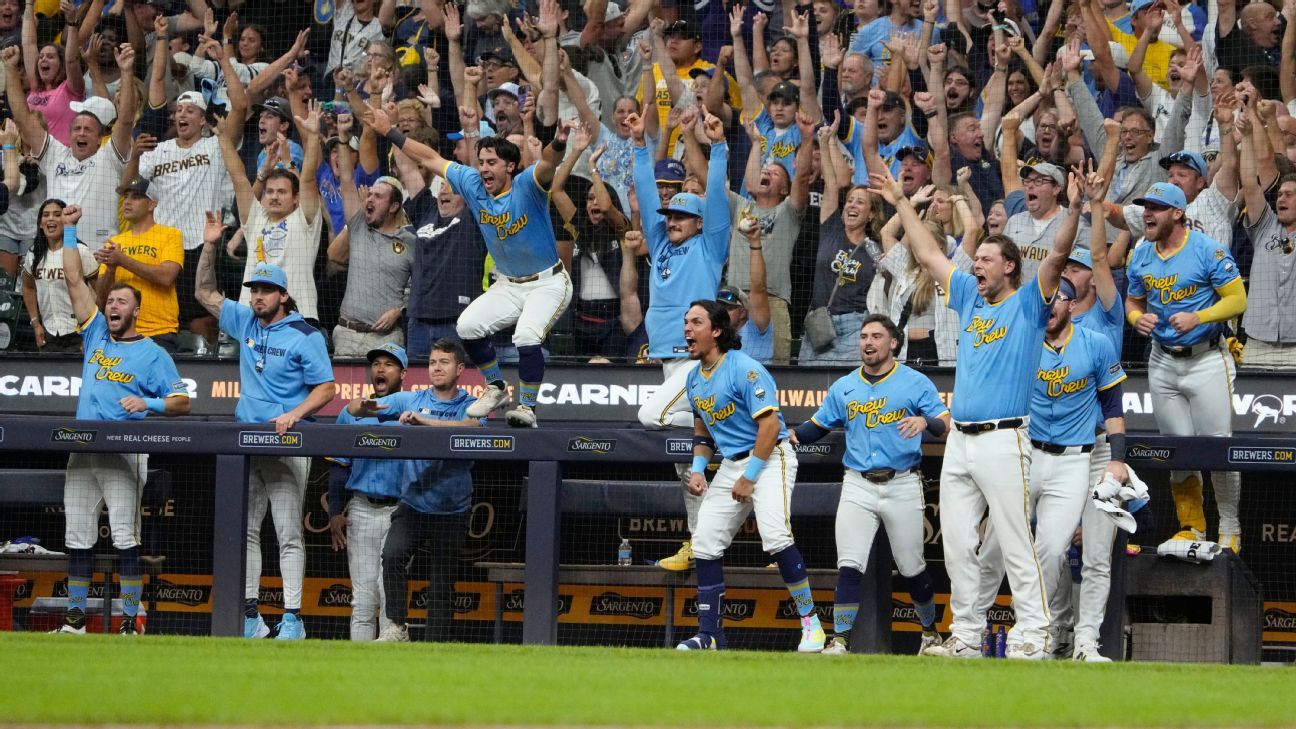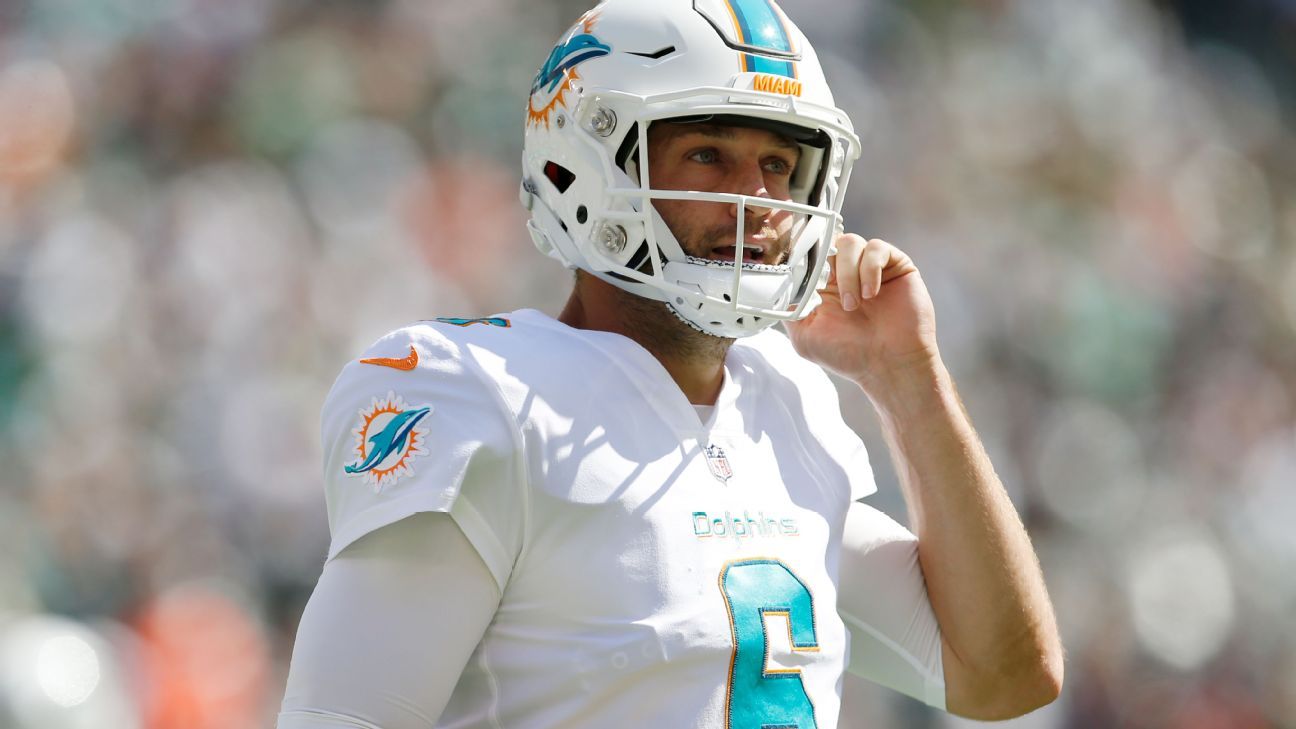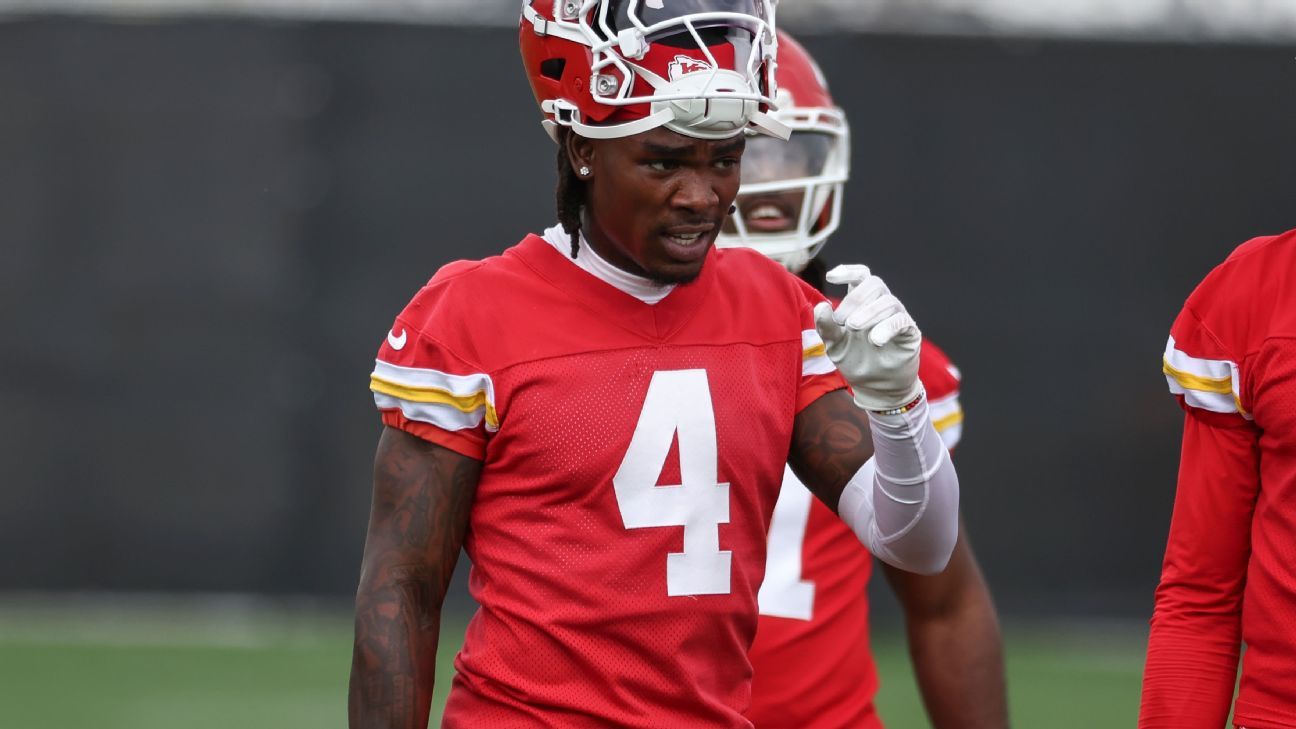The fantasy baseball playoffs — in head-to-head formats, at least — are just about here, beginning on Monday in ESPN leagues.
Yes, it’s formally make-or-break, win-or-go-home time, where the stakes are heightened each and every day. As an aside for those of you in rotisserie leagues, you’re not in much different circumstances, with a mad, four-week dash to the finish line ahead.
Hey, we get it. It’s fantasy football time. We’re aware that your focus might have diminished. We’re also now in the 154th day of a marathon, 186-day season — and one that has seen scads of changing trends. For example, Kyle Tucker has gone from being the No. 7 overall fantasy point scorer through the season’s first three months, to having been outscored by 183 players since.
Nevertheless, extracting the most out of your fantasy baseball roster over this final month and in every week, every game and every at-bat, is paramount. There’s simply no room for mistakes.
Fortunately, you’ve come to the right place. Below is my “Playoff Playbook,” a comprehensive guide to the nuances that come with September baseball. From on-the-field motivation, to pitching workload concerns, to favorable schedules as well as schedule nuances, to streaming strategies, this is everything you need to formulate your September strategy.
The importance of on-the-field motivation
Among the biggest drawbacks of the head-to-head format in fantasy baseball is the fact that the most important portion of the season — the fantasy playoffs — aligns with the portion of the schedule where the fate of many MLB teams is already decided.
Some MLB teams clinch their playoff spots and many non-contenders become mathematically eliminated well in advance of Game 162. This is especially common during the MLB season’s final week (Week 26 in fantasy, spanning the games from Sept. 22-28). For any of these teams, there’s little reason for them to send their players out there night after night, since wins won’t matter to the standings.
Pitchers get shuffled in the rotation order in advance of their teams’ playoff runs. Some players are dealing with nagging injuries or perhaps are just in need of rest. Then there are players who have been exceedingly heavily used — particularly younger pitchers whose arms have been taxed significantly more than in their professional past. They’re all strong candidates to sit in these final weeks.
Unfortunately for fantasy managers, September 2025 is shaping up as one of the more anticlimactic final regular-season months in recent memory. A quick scan of the standings reflects that all 12 teams that are currently sitting in playoff spots have a 90% or better chance of advancing to October.
As we enter play on Wednesday, the Milwaukee Brewers have a magic number of just 14 (that’s the combined number of a team’s own wins plus the number of losses by the next-closest team in that specific race) to clinch a playoff spot. The Detroit Tigers have a magic number of 19 to clinch both a playoff spot and division title.
Four of the six division leaders have at least a four-game lead in the standings, and only two teams outside the current playoff picture are within four games of a wild card spot — the Cincinnati Reds (3.5) and the Kansas City Royals (3). All this makes it difficult to draw only from teams in tight playoff races, although the Reds, Royals, Texas Rangers (4.5) and Cleveland Guardians (5) will all surely roll out their regulars for as long as they remain within striking distance.
Among the teams currently holding down a playoff spot, both of the West Division races could provide compelling sources of motivation for fantasy purposes. The Los Angeles Dodgers and San Diego Padres, who have swapped spots atop the National League West four times over the past two weeks alone and are separated by only one game in the standings, should both be plenty motivated to emerge with a division title, which could mean as much as a first-round playoff bye (if they’re NL’s No. 2 seed) or at the least the difference between playing the first-round at home versus on the road.
The Houston Astros and Seattle Mariners, meanwhile, are separated by 1.5 games after having been tied in the American League West as recently as Aug. 12. The division winner will probably only benefit from getting a home first-round playoff series, but that could be especially important to a team like the Mariners, considering the travel involved with playing an east-coast opponent (Boston Red Sox or New York Yankees) or the alternative of a Mariners-Astros showdown in Houston.
It’s the standings that could, for example:
Coax the Astros to press Yordan Alvarez, who returned from a broken hand on Tuesday, harder in his return.
Persuade the Mariners to keep relying on Bryce Miller, who needs offseason surgery to remove bone spurs from his elbow but showed good velocity in his first two starts since returning from the IL.
Keep Michael King (who has made two trips to the IL already) in the regular rotation of the Padres, with their sights set on him occupying a similar postseason role.
Prolong the Dodgers’ Shohei Ohtani pitching experiment, despite his recent struggles, giving his fantasy managers a chance at meaningful September starts from him.
Justify the Reds keeping top-30 fantasy starting pitchers Andrew Abbott and Nick Lodolo (currently on the mend from a blister) in their rotation for the duration, despite each being on pace for nearly 40 innings over their 2024 totals. Speaking of which…
Workload worries
Pitchers — especially younger ones — who are on pace for a significant year-over-year IP jump are at greatest risk of having their schedules altered during the season’s final month. Teams typically resist allowing their pitchers to experience more than a 40 inning increase from one season to the next, with some exceptions related to age, track record and the severity of the injury.
Among pitchers who are rostered in at least 20% of ESPN leagues, the following are at the most extreme risk of having starts skipped or being shut down before the season ends.
1. Sandy Alcantara, SP, Miami Marlins (45.2% rostered): Although he is in the midst of a terrible season, Alcantara has pitched better of late, with a 3.42 ERA and a 1.10 WHIP in his eight starts since the All-Star break. The Marlins, who have him under contract for an affordable $17.3 million in 2026 and hold a $21 million 2027 option with a $2 million buyout, will want him healthy as a winter trade chip. Shutting him down at 160 IP and at a high point of his year can only strengthen their case.
2. Spencer Strider, SP, Atlanta Braves (70.3%): Strider has struggled mightily in August (a 10.13 ERA in four starts) and is already having his outings spaced out. He is a critical, 26-year-old piece of the team’s future rotation. Emphasis on “future.”
3. Jacob deGrom, SP, Rangers (97.8%): Considering the Rangers owe him $75 million over the next two seasons and have already skipped him once in their rotation due to shoulder fatigue, they might be inclined to end his season the moment they’re realistically out of the wild card race — and certainly once they seal their fate mathematically. Tuesday’s announcement that fellow starter Nathan Eovaldi is out for the season might only push them closer to “turn-the-page mode.”
4. Eury Perez, SP, Marlins (36.7%): He has been electric in his return from April 2024 Tommy John surgery, most notably posting a 2.63 ERA over his last 10 starts, but there’s no reason for a non-contending team to push its 22-year-old budding ace much beyond the 100-IP threshold.
5. Robbie Ray, SP, San Francisco Giants (91.2%): Although he’s an older pitcher, Ray’s 196-IP pace, in his first full season back following Tommy John surgery, would still set a professional best for the left-hander. The non-contending Giants, who owe him $25 million for 2026, will probably grant him some early rest.
6. Chase Burns, SP, Reds (23.8%): He’s on the mend from a flexor strain, but the Reds have no reason to ask any further of the 22-year-old if they fall out of the race. He has already thrown 100 1/3 innings in his first professional season.
7. Matthew Boyd, SP, Chicago Cubs (87.3%): A true conundrum, the Cubs both need Boyd to help propel themselves into October and to play an integral part in said playoffs, despite the fact that he’s currently on pace for 188 IP. That would be a professional high and more than double his total in any one of the previous five seasons.
8. Cade Horton, SP, Cubs (28.7%): He has played a critical role for a contending Cubs team, but they surely would like to slow down his current 151-IP pace. After all, the strong contender for NL Rookie of the Year is only 23 years old and totaled only 122 2/3 IP over his first two pro campaigns.
9. Ryan Pepiot, SP, Tampa Bay Rays (50.8%): He has out-earned in two seasons, in terms of WAR, the pitcher he was traded for (Tyler Glasnow), and the Rays have done a superb job of ramping up his annual workloads. That said, a pace of 188 IP (54 2/3 more than the threw in 2024) is surely excessive in their view.
September schedules
Accounting for a combination of total number of games, home games, games in hitter-friendly environments as well as the daily matchups themselves (those using my Forecaster projections model), here are the teams with the most-favorable schedules for September.
Teams to lean on for hitting
1. Padres: They’ve got more home games than any team (16), and while, yes, those are to be played at pitcher-friendly Petco Park, they also have only three more games all year against pitching staffs which the Forecaster grades among the top-10 toughest matchups. Those three are Sept. 22-24 at home against the Brewers, who may have already clinched a first-round playoff bye by then. In total, the Padres play 16 of their 25 games against Forecaster’s top-10 easiest matchups, which is great news for hot-starting trade deadline acquisitions Ramon Laureano (31.6% rostered) and Ryan O’Hearn (21.5%), as well as the rest of their lineup-mates.
2. Red Sox: They benefit most from trips to each of the “minor-league ballparks masquerading as MLB venues.” We’re talking about Sacramento’s Sutter Health Park (Sept. 8-10) and Tampa’s George M. Steinbrenner Field (Sept. 19-21), with the meatiest part of their schedule coming in Weeks 24-25. Boston’s only series against a top-10 toughest pitching staff comes in the final weekend against a Tigers team that is sure to be more focused on lining up ace Tarik Skubal for the playoffs than pitching him in that series. Since signing his eight-year, $130 million extension, Roman Anthony (34.9% rostered) is hitting .284/.388/.507 with four homers over 17 games.
3. Washington Nationals: For a rebuilding team that has only three total players who are rostered in more than half of ESPN leagues, the Nationals have quite an easy go of it in September. Their 26 total games are the second-highest total and they play seven games apiece against the Braves and Marlins. Luis Garcia Jr. (34.7% rostered) and Dylan Crews (17.5%) should continue to serve as middle-of-the-order hitters as the team continues to look towards 2026.
Teams to lean on for pitching
1. Dodgers: They can consider themselves fortunate to have finished all of their (regular) season series with the Padres, and among the top-10 toughest offenses to face, only the Philadelphia Phillies (Sept. 15-17) remain on their schedule. Their Weeks 23-24 matchups are ridiculously soft, which is great news for widely available starters Clayton Kershaw (35.8% available) and Emmet Sheehan (8.4%).
2. Padres: They have easily baseball’s softest overall September schedule, with only the New York Mets (Sept. 16-18) joining the aforementioned Brewers on the challenging side of the pitching matchups scale. Among available Padres starters, Yu Darvish (17.5% available) and Nestor Cortes (13.7%) haven’t captured much fantasy attention despite their strong recent performances since recovering from injuries.
3. Giants: The lone criticism of their schedule is the seven remaining games against the Dodgers (Sept. 12-14, at home; Sept. 18-21, in Los Angeles). Take those out, and the Giants’ September matchups are a dream for their pitchers, with six games apiece against the Colorado Rockies, Arizona Diamondbacks and St. Louis Cardinals. Ryan Walker (57.2% rostered), who has recaptured his closer role following the injury to Randy Rodriguez, should be universally added.
Week-by-week schedule outlook
You can’t get to the fantasy championship (Weeks 25-26) if you don’t first advance beyond your league’s semifinals. With that in mind, here are some schedule nuances to consider in each of the upcoming individual playoff weeks:
Week 23 (Sept. 1-7): Labor Day, the Monday that begins the week, brings with it 11 day games, so make sure to set your lineups before heading out for holiday festivities. All six teams scheduled for seven games hail from the AL (Guardians, Chicago White Sox, Astros, Los Angeles Angels, Minnesota Twins, Rays), and every team is scheduled for at least six. The Rockies play six games at Coors Field.
The aforementioned Padres have outstanding hitting matchups (BAL-3, @COL-3), as do the Giants (@COL-3, @STL-3). The Dodgers, as detailed above, stand out on the pitching side (@PIT-3, @BAL-3). The Cubs have great home matchups, with a slight advantage to hitters over pitchers, against the Braves and Nationals. Blue Jays pitchers have their work cut out for them at a pair of extreme home run environments (@CIN-3, @NYY-3).
Week 24 (Sept. 8-14): It’s a dream week for both the Dodgers (COL-3, @SF-3) and Padres (CIN-3, COL-4) on both sides of the ball, but particularly for Padres pitchers as a result of their opponents’ significantly weaker numbers in road games. Nationals pitchers could warrant streaming consideration during their four-game series at Miami’s loanDepot Park and three-game series back home. Rangers hitters could be in for a tough week against the Brewers (three home games) and Mets (three road games). Mariners pitchers get seven home games against below-average offenses (STL-3, LAA-4). You could extract useful stats from lesser-known Pittsburgh Pirates hitters like Spencer Horwitz (8.9% rostered) and Jared Triolo (2.9%) in a favorable six-game week (@BAL-3, @WSH-3).
Week 25 (Sept. 15-21): This is the final week of Coors Field games, with the Marlins and Angels visting. The Yankees match up well on both sides of the ball, but especially so on the pitching side, in a favorable seven-game road swing (@MIN-3, @BAL-4). Rays pitching has its work cut out for it at hitting-friendly George M. Steinbrenner Field (TOR-4, BOS-3). The Brewers should put up elite pitching numbers in what could be a playoff clinching week for them (LAA-3, @STL-3).
Week 26 (Sept. 22-28): All 30 teams are scheduled for exactly six games. Should the Braves have any reliable streaming candidates remaining in their rotation, they’ve got one of the most pitcher-friendly schedules (WSH-3, PIT-3). The Red Sox are in for a challenging final week, should their two opponents still be fighting for playoff seeding (@TOR-3, DET-3). Expect good hitting numbers from the Astros, who make visits to Sutter Health Park and Los Angeles’ Angel Stadium. The Giants should be good choices on both side of the ball, but especially their pitchers (STL-3, COL-3). Nationals players make strong fantasy options for the final week (@ATL-3, CWS-3). Despite calling hitter-friendly environments their homes, both the Yankees (CWS-3, BAL-3) and Phillies (MIA-3, MIN-3) should deliver solid pitching (and probably also hitting) numbers.















Leave a Reply